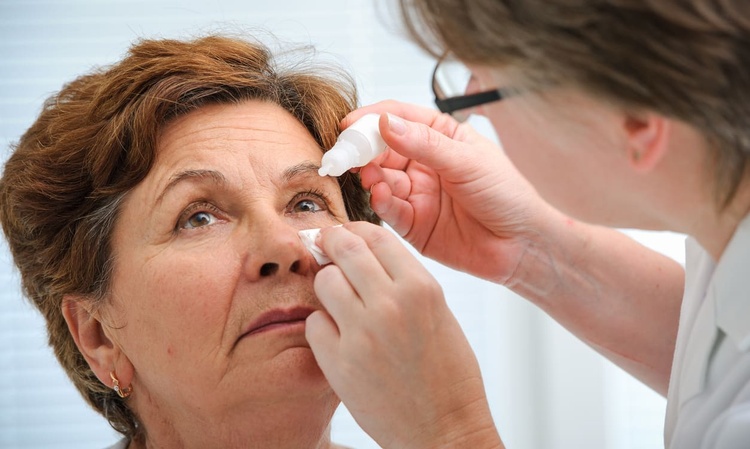Laser Vision Correction: A Clearer View Might Be Closer Than You Think
Thinking about ditching your glasses or contacts? Discover how laser vision correction might help improve your eyesight with long-lasting results. This advanced procedure reshapes the cornea to correct vision issues such as nearsightedness, farsightedness, or astigmatism, helping many people see clearly without lenses. Before taking the next step, it’s important to understand the types of laser treatments available, the recovery process, and whether you’re a good candidate for the surgery.

Laser vision correction has revolutionized how we approach common vision problems, offering a path to clearer sight without the daily dependence on corrective eyewear. Understanding the intricacies of these procedures can help you make informed decisions about your eye health and determine whether this treatment aligns with your lifestyle goals.
How Laser Vision Correction Works
Laser vision correction operates on a precise principle of corneal reshaping using concentrated light energy. The procedure targets the cornea, the clear front surface of your eye, which plays a crucial role in focusing light onto the retina. When the cornea has an irregular shape, it causes refractive errors that result in blurred vision.
During the procedure, an excimer laser removes microscopic amounts of corneal tissue with extraordinary precision. This reshaping process corrects the way light enters your eye, allowing it to focus properly on the retina for clearer vision. The laser is programmed based on detailed measurements of your eye, ensuring a customized treatment that addresses your specific vision correction needs.
Different Types of Laser Eye Surgery
Several laser vision correction techniques are available, each with distinct approaches and benefits. LASIK (Laser-Assisted In Situ Keratomileusis) remains the most widely performed procedure, involving the creation of a thin corneal flap before laser reshaping. This technique typically offers rapid healing and minimal discomfort.
PRK (Photorefractive Keratectomy) represents an alternative approach where the outer corneal layer is gently removed before laser treatment. While recovery takes longer than LASIK, PRK may be suitable for patients with thinner corneas or certain corneal irregularities. LASEK (Laser Epithelial Keratomileusis) combines elements of both techniques, preserving more corneal tissue while maintaining effectiveness.
Smaller incision procedures like SMILE (Small Incision Lenticule Extraction) have gained popularity for their minimally invasive approach, particularly effective for treating nearsightedness and astigmatism.
Who Is a Good Candidate for the Procedure?
Ideal candidates for laser vision correction typically share several characteristics that contribute to successful outcomes. Age plays a significant role, with most surgeons recommending patients be at least 18 years old with stable vision prescription for at least one year. This stability ensures that natural vision changes have stabilized before surgical intervention.
Healthy corneas with adequate thickness are essential for safe laser treatment. Patients with certain eye conditions, including severe dry eyes, glaucoma, or corneal diseases, may not be suitable candidates. Additionally, individuals with autoimmune disorders, uncontrolled diabetes, or those who are pregnant or nursing should typically postpone the procedure.
Lifestyle factors also influence candidacy. People engaged in contact sports or occupations with high eye injury risk may benefit from discussing alternative options with their eye care professional.
What to Expect Before During and After Surgery
Preparation for laser vision correction begins with comprehensive eye examinations several weeks before your procedure. These evaluations include corneal mapping, pupil measurements, and assessment of your overall eye health. Contact lens wearers must discontinue use for a specified period before surgery to allow corneal shape stabilization.
On surgery day, the actual laser treatment typically takes only minutes per eye. Numbing drops ensure comfort throughout the procedure, and patients remain awake but relaxed. Most people experience minimal discomfort during treatment, describing sensations of pressure rather than pain.
Post-surgery recovery varies by procedure type, with LASIK patients often experiencing improved vision within hours. Initial healing involves following specific eye drop regimens, avoiding eye rubbing, and protecting eyes from bright light. Regular follow-up appointments monitor healing progress and address any concerns.
| Provider | Location | Procedure Types | Cost Estimation |
|---|---|---|---|
| Optilase | Dublin, Cork, Belfast | LASIK, PRK, LASEK | €1,500-€2,500 per eye |
| Wellington Eye Clinic | Dublin | LASIK, SMILE | €2,000-€3,000 per eye |
| Blackrock Clinic | Dublin | LASIK, PRK | €1,800-€2,800 per eye |
| Advanced Vision Care | Cork | LASIK, LASEK | €1,600-€2,400 per eye |
Prices, rates, or cost estimates mentioned in this article are based on the latest available information but may change over time. Independent research is advised before making financial decisions.
Long-Term Results and Eye Care Tips
Laser vision correction typically provides lasting results, with most patients maintaining improved vision for many years. Studies indicate that over 95% of patients achieve 20/40 vision or better, with many reaching 20/20 vision or superior. However, natural aging processes may eventually affect vision, particularly after age 40 when presbyopia commonly develops.
Maintaining optimal eye health after laser correction involves regular comprehensive eye examinations, even with improved vision. Protecting eyes from UV radiation through quality sunglasses remains important, as does following proper digital device usage habits to minimize eye strain.
Some patients may experience temporary side effects like dry eyes, glare, or halos around lights, particularly during night driving. These symptoms typically diminish as healing progresses, though a small percentage of patients may experience persistent effects requiring additional treatment or enhancement procedures.
This article is for informational purposes only and should not be considered medical advice. Please consult a qualified healthcare professional for personalized guidance and treatment.




